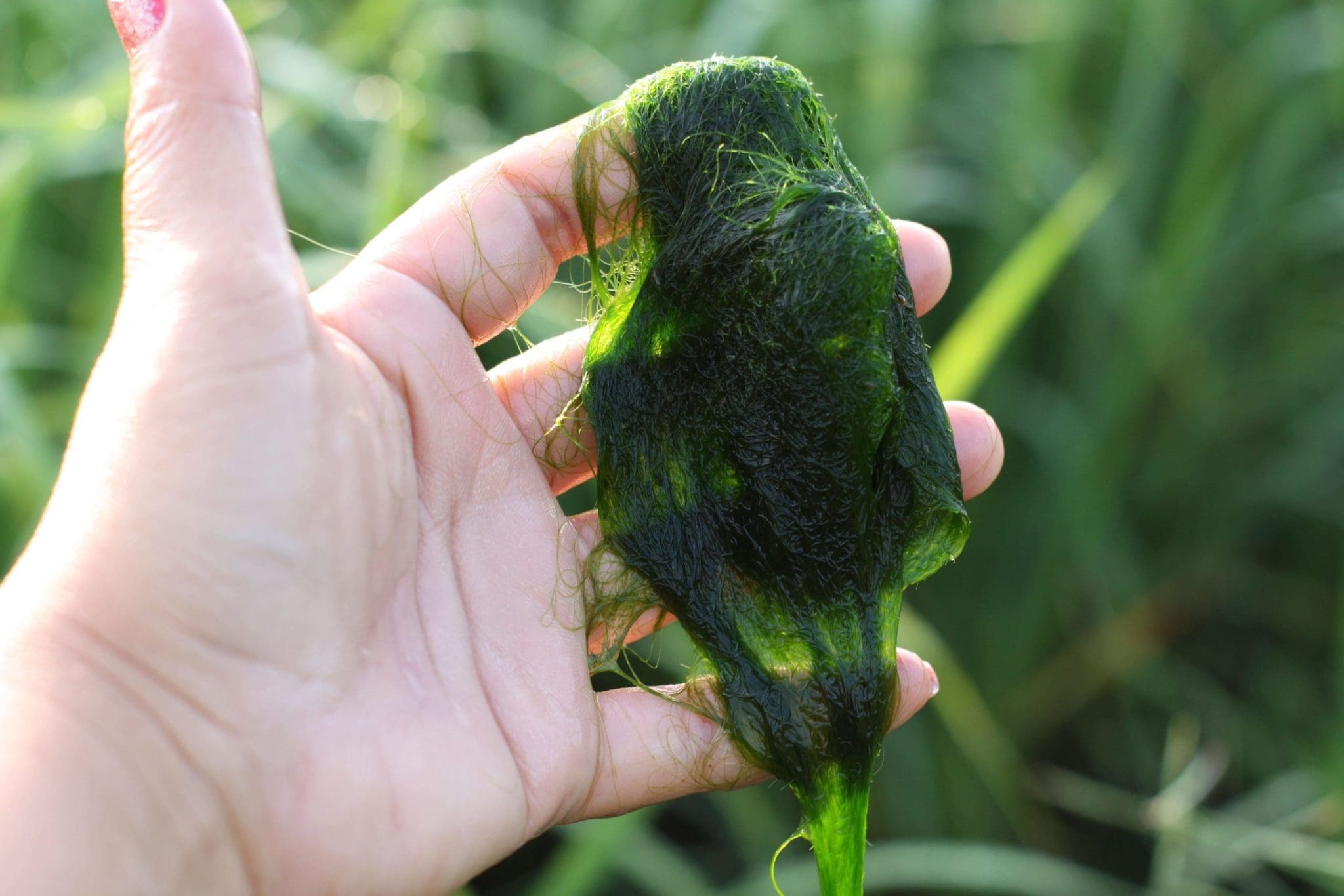Scientific names: Spirogyra, Anabaena, Oscillatoria, Lyngbya, Pithophora, etc.
Physical Characteristics
- Single algae cells that form long visible chains, threads, or filaments
- Filaments intertwine forming a mat that resembles wet wool
Where Does it Grow?
Filamentous algae starts growing along the bottom in shallow water or attached to structures in the water (like rocks or other aquatic plants). Often, filamentous algae floats to the surface forming large mats, which are commonly referred to as “Pond scums.” There are many species of filamentous algae and often more than one species will be present at the same time in the pond.
Pros and Cons of Filamentous Algae
Filamentous algae has no known direct food value to wildlife. Submerged portions of all aquatic plants provide habitats for many micro and macro invertebrates (i.e. bugs, worms, etc.). These invertebrates in turn are used as food by fish and other wildlife species (e.g. amphibians, reptiles, ducks, etc.). After aquatic plants die, their decomposition by bacteria and fungi provides food (called “detritus”) for many aquatic invertebrates.
USDA, NRCS. 2018. The PLANTS Database (http://plants.usda.gov, 28 March 2018). National Plant Data Team, Greensboro, NC 27401-4901 USA.
Information and photos courtesy of AquaPlant A Diagnostics Tool for Pond Plants and Algae.

